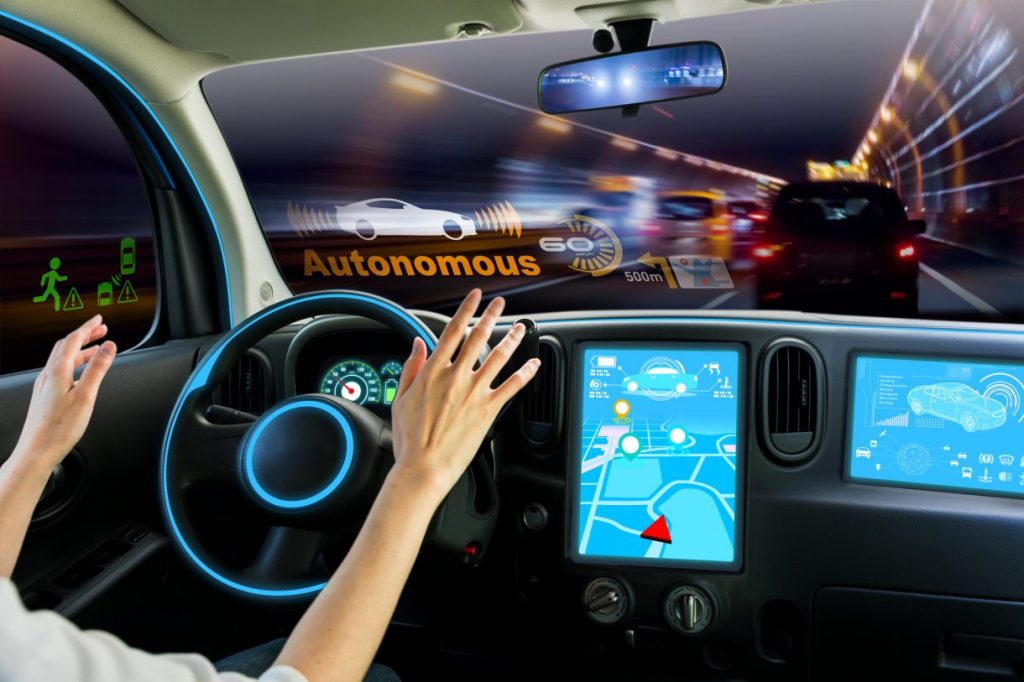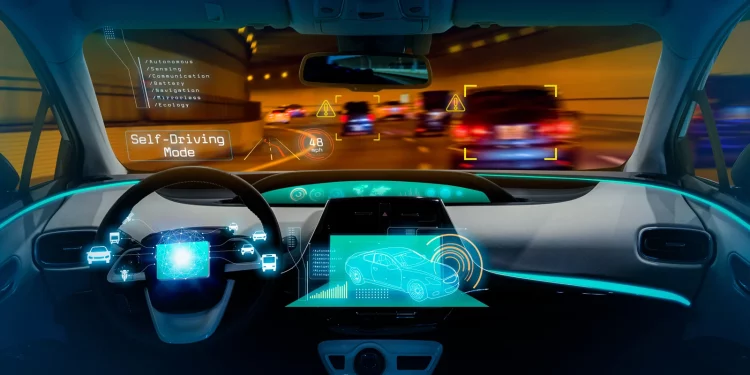Introduction
The future of transportation is rapidly evolving, and electric vehicles (EVs) are at the forefront of this transformation. In addition to offering a sustainable alternative to traditional gasoline-powered cars, EVs are increasingly integrating cutting-edge technologies that promise to completely redefine the driving experience. Among these innovations, artificial intelligence (AI) and autonomous driving stand out as game-changers that will likely redefine how we view mobility in the coming decades.
While the idea of self-driving cars seemed like a distant dream just a few years ago, today, it’s becoming a tangible reality. Electric vehicles, combined with advancements in AI and autonomous driving, have the potential to radically alter how we travel—both for individuals and society at large. These technologies are not only set to make transportation safer, more efficient, and environmentally friendly, but they will also open up entirely new ways for people to interact with vehicles.
This article explores how the convergence of AI, electric vehicles, and autonomous driving will reshape the future of transportation, offering a glimpse into how our experience with mobility will transform in the years ahead.
1. Artificial Intelligence: The Brain Behind Future EVs
A. AI-Powered Infotainment Systems
One of the most visible ways AI will transform the electric vehicle (EV) experience is through the infotainment system. Future EVs are expected to feature intelligent in-car assistants that can learn and adapt to the driver’s preferences, offering a more personalized and seamless journey.
For example:
- Voice Recognition: AI-powered voice assistants, like Alexa or Google Assistant, will become more integrated into the car’s operating system, allowing drivers to control navigation, music, climate, and even vehicle settings with natural language commands.
- Personalized Experience: AI will analyze driving habits and preferences to adjust seat positioning, temperature, and even preferred routes, enhancing comfort for every driver. Imagine entering your car, and the seat and mirror automatically adjust to your settings, your favorite playlist starts, and your route is already mapped out based on current traffic conditions and past preferences.
- Advanced Gesture Controls: AI-powered gesture recognition could allow drivers to interact with their vehicle’s systems without taking their hands off the wheel. Wave a hand, and the window may open or a call may be answered—without the need for buttons or screens.
These features will not only enhance the convenience of driving but also make the overall experience much more user-friendly, shifting towards a truly smart vehicle that learns and adapts over time.
B. AI for Enhanced Safety
Safety is one of the biggest concerns for any vehicle, and AI will play a central role in making future electric vehicles far safer than anything on the road today. Future EVs will likely come with AI-powered safety systems that are far more advanced than the basic sensors and cameras used in current cars. These systems will include:
- Predictive Algorithms: AI will be able to analyze data from various sensors (such as cameras, LIDAR, and radar) in real-time to predict potential hazards before they happen. If another vehicle is moving erratically, the AI will alert the driver or, in the case of autonomous driving, take control of the vehicle to avoid a collision.
- Driver Monitoring: AI will be able to monitor the driver’s behavior and detect signs of fatigue or distraction. If it senses that the driver is not paying attention, the vehicle can send alerts or even take over driving to prevent accidents.
- Advanced Collision Avoidance: Future AI systems will not only assist in avoiding collisions but will also be able to re-route vehicles based on real-time traffic data, helping to avoid congested areas or high-risk zones, thereby improving the overall safety of transportation.
With AI continuously monitoring and improving the driving environment, future EVs will be significantly safer, offering levels of protection far beyond traditional vehicles.
2. Autonomous Driving: The Next Frontier of Mobility
A. The End of the Steering Wheel?
At the heart of the next evolution in EVs is autonomous driving—a technology that will likely redefine the entire experience of traveling. While fully autonomous cars are still in the testing phase, many companies, including Tesla, Waymo, and Apple, are aggressively pursuing self-driving vehicle technologies. Here’s what we can expect in the future:
- Level 5 Autonomy: In the coming decades, fully autonomous vehicles (Level 5)—those that require no human intervention whatsoever—could become the norm. In these cars, drivers will no longer need to steer, brake, or accelerate. Instead, they will sit back and relax, allowing the vehicle to drive itself.
- Redesigning the Interior: With no need for a steering wheel or pedals, the interior of the car will be entirely reimagined. The focus will shift from driving controls to comfort and entertainment, making the vehicle more akin to a mobile living room or office. Seats could be reclined, large screens could offer entertainment, and collaborative spaces could be created for passengers to interact.
- Ride-Sharing Revolution: Autonomous driving could make ride-sharing far more efficient, affordable, and widespread. Autonomous EV fleets could offer on-demand mobility, allowing consumers to opt for ride-hailing services without needing to own a car at all. This would drastically reduce car ownership rates, especially in urban areas, and decrease traffic congestion and emissions.
The prospect of self-driving cars represents not just a technological leap but a philosophical shift—moving away from individual car ownership to more shared mobility solutions that are efficient, cost-effective, and sustainable.
B. Autonomous EVs: Eco-Friendly and Cost-Efficient
Autonomous vehicles could be a perfect match for electric mobility due to their complementary benefits:
- Energy Efficiency: Autonomous cars will be able to drive in the most efficient manner possible. They will optimize speed, braking, and energy use, reducing unnecessary energy consumption. For example, EVs equipped with autonomous driving could use predictive algorithms to regulate speed based on traffic patterns, road conditions, and energy efficiency, reducing range loss.
- Increased Availability of EVs: Autonomous electric vehicle fleets could significantly improve the availability of electric cars for shared rides. When these fleets are autonomously operated, there will be little need for human drivers to handle the logistics. This means electric ride-sharing services could become more prevalent, offering environmentally friendly transportation on-demand.
By combining electric drivetrains with autonomous driving, we could see a future where cities are filled with fleets of driverless EVs, providing an alternative to conventional car ownership and reducing the environmental impact of transportation.

3. AI and Autonomous Driving: Enhancing the EV User Experience
A. A Seamless, Fully Integrated Mobility Solution
With AI and autonomous driving, the electric vehicle experience will go far beyond just driving. It will extend to a holistic, seamless journey, from the moment you book a ride to when you reach your destination. Here’s how AI and autonomous driving can transform the overall mobility experience:
- Predictive Routing: AI-powered EVs will use real-time traffic data, weather conditions, and even social factors to suggest the best route for a given journey. This means faster, safer, and more efficient travel for everyone. The car could suggest detours based on traffic or suggest the best time for departure.
- End-to-End Services: Future EVs will offer integrated solutions for daily life, including in-car concierge services. Whether it’s reserving a parking spot, recommending nearby restaurants, or managing your calendar, AI will serve as your personal assistant, keeping your day running smoothly.
- Remote Control: In some situations, you could even control your car remotely using an app. Need to find your car in a crowded parking lot or check if the car is fully charged? Remote access will become a standard feature in the next generation of EVs, further enhancing convenience.
B. Autonomous EVs: A Key to Sustainable Urban Mobility
One of the most profound impacts of autonomous electric vehicles is the potential for sustainable urban mobility:
- Reducing Congestion: Autonomous EVs can communicate with each other and the surrounding infrastructure, allowing them to drive in formation and follow optimal routes. This will reduce traffic congestion and make urban spaces more livable.
- Green Transportation Networks: Fully autonomous EV fleets could be used as public transport alternatives, offering affordable, energy-efficient solutions to inner-city travel. These fleets could be deployed on-demand, reducing the need for private vehicle ownership and promoting shared, sustainable mobility.
With autonomous electric vehicles, cities could create eco-friendly transportation hubs that reduce congestion, pollution, and the need for massive parking infrastructure, making urban environments cleaner, quieter, and more efficient.
4. Conclusion: A New Era of Driving
As artificial intelligence and autonomous driving technologies continue to evolve, the future of electric vehicles is poised to revolutionize not just how we drive but how we experience mobility altogether. The combination of AI-powered personalization, autonomous driving, and electric powertrains will redefine the way we interact with our vehicles, turning them into intelligent companions that provide safety, convenience, and entertainment.











































